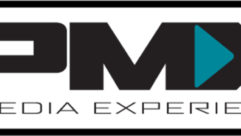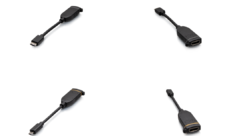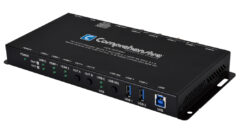
HDMI Makes Its Way into Pro AV Systems
Dec 4, 2009 12:00 PM,
Provided by InfoComm International
HDMI was, until recently, more known in consumer AV than in pro AV systems. HDMI is one flavor of digital video technology that holds the promise of a single cable for audio, video, and data. The rise of HDMI popularity in the consumer market is attributed to Blu-ray players that required HDMI connections in order to function. For better or for worse, HDMI is now showing up in more and more pro systems.
“There’s been a decided shift in the pro AV market towards HDMI in just the past six months,” says Chris Kopin, vice president of product development for Kramer Electronics. “There are more customers who utilize HDMI in high-definition systems at home and want the technology in their offices.”
According to hdmi.org, the website run by licensing agent HDMI Licensing, 229 million HDMI-enabled devices shipped in 2008. The 2009 projection brings that number closer to 300 million. Those numbers make HDMI hard to ignore.
“HDMI is gaining popularity with PC computers and laptops; it’s more than just Blu-ray,” says Jim Scrivner, Extron product marketing manager. “Digital video represents the Holy Grail for perfect image transfer and commercial AV systems should be designed to support HDMI signals along with other digital video formats like DVI, HD-SDI, and DisplayPort.”
Perhaps the biggest challenges in dealing with HDMI and other digital video formats are the vast differences between analog and digital video infrastructure and behavior. The pro AV market has worked with analog video for so long that integrators know all of the tips and tricks to get the perfect picture without noise or shifts. “If you are having a problem with a digital video signal, there are a number of potential reasons why: an issue with digital rights management, the cable is too long, too many connections, or there is too much jitter,” Scrivner says.
“Switching and distribution of HDMI can be tricky because HDMI can carry HDCP-encrypted content,” says Michael Goldman, regional manager in consultant and educational market development for Crestron. “If the HDCP communication is interrupted for any reason, the stream is shut down, which clearly creates a bad user experience. When done correctly, HDMI can provide a better user experience than analog, especially with display of computers. In the HDMI realm, the display instantly communicates with the laptop, and the laptop automatically outputs the correct resolution video eliminating the need to spend precious time before a meeting trying to get your laptop to look good on the display.”
“There are challenges to the technology. HDMI was designed for home use in a small, closed system that wouldn’t often need to change. In a professional AV system, there are differing signal paths and sources. Distribution and distance are big problems and big factors when using HDMI signals in a pro AV system. Even the order in which you power on/off devices can also affect a system based on HDMI or digital signals because of the importance of the handshake communication,” Kopin says.
Another challenge is that the 19-pin HDMI connector is not easily field-terminated and “is difficult to pull through conduit,” Scrivner says. High-quality HDMI cables usually provide the performance needed for typical installations within a room, and twisted pair and fiber solutions are available to support applications with longer cable runs.
“Digital signals degrade quickly over distance; the higher the resolution, the shorter the distance of cable,” Goldman says.
“There are very large quality variances among products with HDMI interfaces. Reputable manufacturers use HDMI testing labs for testing and certification, which in turn allows them to use the HDMI logo,” Kopin says. “I always give the advice that if you are testing components in your shop to see if they will work in a system, it is necessary to test them with the exact make and model of the source and display to ultimately be used. Some displays have an HDMI equalizer built into the input of the display device and some do not. That can make a huge difference with distance and overall performance.”
Analog video may not disappear overnight, but today’s professional AV systems must also pay attention to the many types of digital video technologies on the horizon.
This is an excerpt from a new InfoComm Special Report, HDMI for Pros. To view the full report, including additional resources, visit www.infocomm.org.










